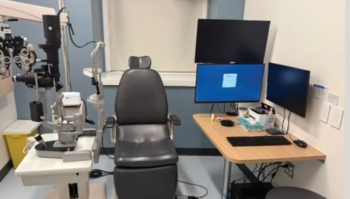
Glaucoma 360: Glaucoma Progression from Hypotension
Ruth Williams, MD, explained the importance of hypotension in glaucoma and its potential as a modifiable risk factor at the 27th annual Glaucoma Symposium during Glaucoma 360 at the Westin St. Francis San Francisco on Union Square.
Hypertension plays a key role in glaucoma, and it has the potential to be a modifiable risk factor, according to Ruth Williams, MD, who discussed the topic during a presentation at the 27th annual Glaucoma Symposium during Glaucoma 360 at the Westin St. Francis San Francisco on Union Square.
Williams is a glaucoma consultant and president emeritus of the Wheaton Eye Clinic in Wheaton, Illinois.
“Blood pressure is also (sometimes) a modifiable risk factor for glaucoma,” she said.
Currently, the IOP is the only modifiable factor but clinicians should be aware of the effects of low BP.
Flammer syndrome
Normal tension glaucoma, she explained, is chronic, progressive optic neuropathy that results in a characteristic optic nerve head cupping, retinal nerve fiber layer thinning, functional visual field loss, and “normal” IOPs.
Flammer syndrome is a pathology that can cause normal tension glaucoma and is characterized by cold hands and feet, low body mass index, and is often associated with low blood pressure (BP). An ocular sign is the reduced ability to autoregulate the ocular blood flow.
A representative case is that of a 57-year-old Caucasian woman with a baseline IOP of 16 mmHg. The patient has cold hands, Raynaud’s syndrome, migraines, low BP, and sleep apnea. Magnetic resonance imaging showed normal head and orbital findings. The patient was generally healthy, took vitamins and was treated for dermatitis. The central corneal thicknesses were 592 and 584 microns. Her bilateral IOPs at night were 10 mm Hg consistently.
In patients with Flammer syndrome, the nocturnal BP tends to be lower. In patients whose BPs dip more than normal, the glaucoma progresses.
This variability in the BP can cause end-organ damage in the heart, kidney, brain, and optic nerve.
Primary open-angle glaucoma (POAG)
There is good evidence from multiple population-based studies for physicians to consider low BP and low ocular perfusion pressure (OPP), defined as 2/3 (mean arterial pressure – IOP), in which there may be inadequate blood flow to tissues, as risk factors for POAG, in that a lower diastolic BP was associated with a 2 to 6 times higher risk of POAG developing.
“A strong association has been seen between low OPP and the incidence/prevalence of OAG,” she commented.
A large population study1 showed that a lower mean arterial pressure, defined as the diastolic BP + 1/3 (systolic BF-diastolic BP), and lower diastolic arterial pressure led to faster rates of loss of the retinal nerve fiber layer in patients with similar IOPs, suggesting that the levels of systemic BP may be a significant factor in glaucoma progression.
Another recent study2 showed that of 20,815 patients analyzed, 462 developed POAG. This study implicated vascular dysregulation as a potential cause of OAG, and that the BP medications did not stop POAG development.
Williams urged physicians to be aware of the potential impact of low BP in patients with glaucoma.
References
1. Jammal AA, Berchuck SI, Mariottoni EB, et al. Blood pressure and glaucomatous progression in a large clinical population. Ophthalmology. 2022;129:161-70. doi: 10.1016/j.ophtha.2021.08.021.
2. Lee EB, Hu W, Singh K, Wang SY. The association among blood pressure, blood pressure medications, and glaucoma in a nationwide electronic health records database. Ophthalmology. 2022;129:276-84.
Newsletter
Get the essential updates shaping the future of pharma manufacturing and compliance—subscribe today to Pharmaceutical Technology and never miss a breakthrough.












































